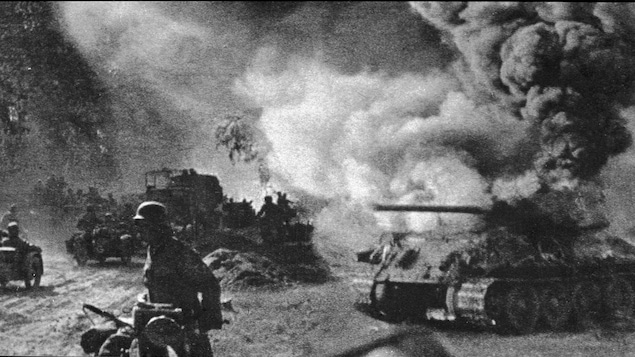

Combining with local Celts, they formed a new Celtic tribe, the Aduatuci, in the region whence they had come. Two days later Marius repulsed an attack on the camp and caught the enemy force between his own main force in the front and an ambush of 3000 men in the enemy rear. The Ambrones lost the main part of their force. The Romans quickly formed ranks and caught the Ambrones trying to recross the river. The Ligurians acting as Roman auxiliaries came to their rescue and were repulsed across the river. Roman camp followers attempting to draw water from a nearby river were attacked by the Ambrones, who were still using it. The battle began as a chance encounter but the Romans turned it into a victory. Marius followed swiftly and again encamped next to them at Aquae Sextiae at the foot of the Alps. They decided to go on and streamed around the camp, giving the Roman soldiers messages for the wives they should encounter as domestics when enslaved. The Teutones assaulted the camp and were repulsed. Marius marched into Liguria and set up camp in the path of the enemy. At this point the Romans decided to make Gaius Marius consul again, illegally, as he had already served.

The Ambrones and the Teutones were to transit Liguria (east of Marseilles), while the Cimbri were to enter Italy further north. 17) in Gaul in 109 BC, a third under Cassius Longinus in 107 and another under Servilius Caepio and Gnaeus Mallius in 105 ( Battle of Arausio).Ĭoncluding that they wouldn't have much trouble sacking Rome and settling in North Italy, the three allies left a base in Gaul and divided into two prongs. 4) in 113 BC at Noreia in Styria, another under Marcus Junius Silanus (Perseus, Silanus, Junius No. The Romans attempted to stand in their way and suffered tragic losses: an army defeated under Gnaeus Papirius Carbo (Perseus, Carbo No. Going around the Boii, the three allies entered Serbia and Bosnia up the Save and Morava, but soon left that mountainous terrain for the greener pastures of Gaul, following a course around the north of the Alps and threatening Rome. Heading for Bohemia, they were successfully resisted by the Boii, who at that time still resided in the land named after them. The total numbers were about 300,000, including 30,000 Ambrones. The Ambrones perhaps were driven by recent floods in the Zuider Zee region, not yet inundated. The three neighbors began their career in Roman history as an alliance determined to emigrate to the lands of the south. However, they did not only come from an area that had been recently Germanized from the North, this was also a time when the Germanic tribes were influenced by Celtic culture. These circumstances suggest a mixed ethnicity, possibly earlier Celtic assimilated to Germanic. Yet, the Romans considered them Germanic, not Celtic, and assisted the Celts against them. The Ambrones followed a Celtic custom in shouting the name of their tribe going into battle. Later in their brief and sanguinary course across Europe, the Cimbri were ruled by Boiorix, a Celtic name, "King of the Boii." The Amb- in Ambrones is an initial segment of many Celtic tribal names.

The Teutones were most likely to have been Germanic, but there is some evidence that the Ambrones and Cimbri may not have been entirely so. Their location at the beginning of their brief history was the coast of north Europe, north of the Rhinemouth, in the Frisian Islands, the region now occupied by what is left of the Zuider Zee, and Jutland, which they shared with their close neighbors, the Cimbri and the Teutones.Īs to their ethnicity there is no agreement. The tribe of the Ambrones appears briefly in the Roman sources relating to the 2nd century BC.


 0 kommentar(er)
0 kommentar(er)
